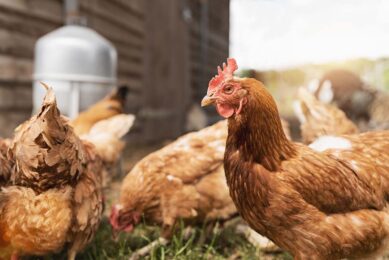Avian Intestinal Spirochaetosis more widespread
Avian intestinal spirochaetosis may be more widespread than previously thought, and new calculations show that the potential losses to the UK laying industry could be more than £4.1 million (6 million euros) per year, assuming that 30% of laying flocks are affected.
Avian Intestinal Spirochaetosis causes chronic soft to watery brown droppings, a 10% drop in egg production and 8% increase in mortality over the laying period.
Recent research shows that Avian intestinal spirochaetosis is especially common in free-range flocks where B. intermedia appears to dominate. Caged flocks can be infected but B. pilosicoli appears to be more common.
Newly published research by three specialist poultry veterinarians records just how widespread spirochaetosis may be, both in caged and free-range birds.
In a small survey of six caged-hen flocks with depressed production, one flock had pale eggs, thought to be associated with high avian pneumovirus (ART/TRT) titres and only B. innocens was isolated. In the other 5 flocks, B. pilosicoli were cultured and only one of these flocks, with the most severe performance drop, showed rising IB titres as well. It is important to carry out a number of tests to obtain a correct diagnosis, as it may involve more than one causal agent.
Treatment of laying hens is limited to two antibiotics in some EU countries, because of the necessity for a zero withdrawal period in eggs. Both tiamulin and chlortetracycline have been used separately and in combination to control these spirochaete infections and tiamulin has been shown to be effective where chlortetracycline resistance occurs.
The full report is available online.
Go to the worldpoultry.net Poultry Health and Diseases index.
Join 31,000+ subscribers
Subscribe to our newsletter to stay updated about all the need-to-know content in the poultry sector, three times a week. Beheer
Beheer








 WP Admin
WP Admin  Bewerk bericht
Bewerk bericht